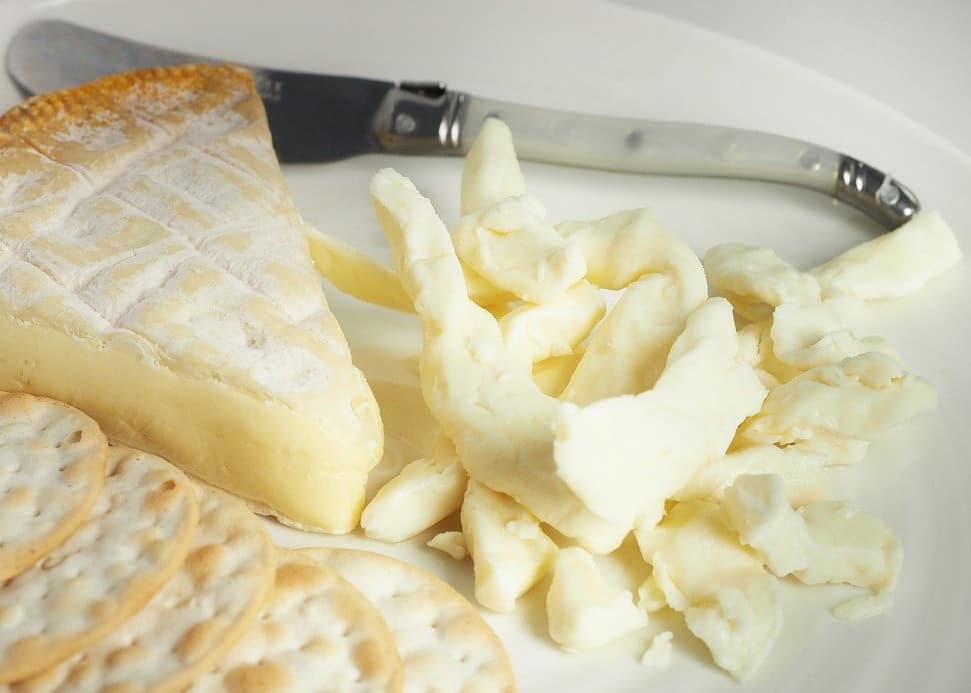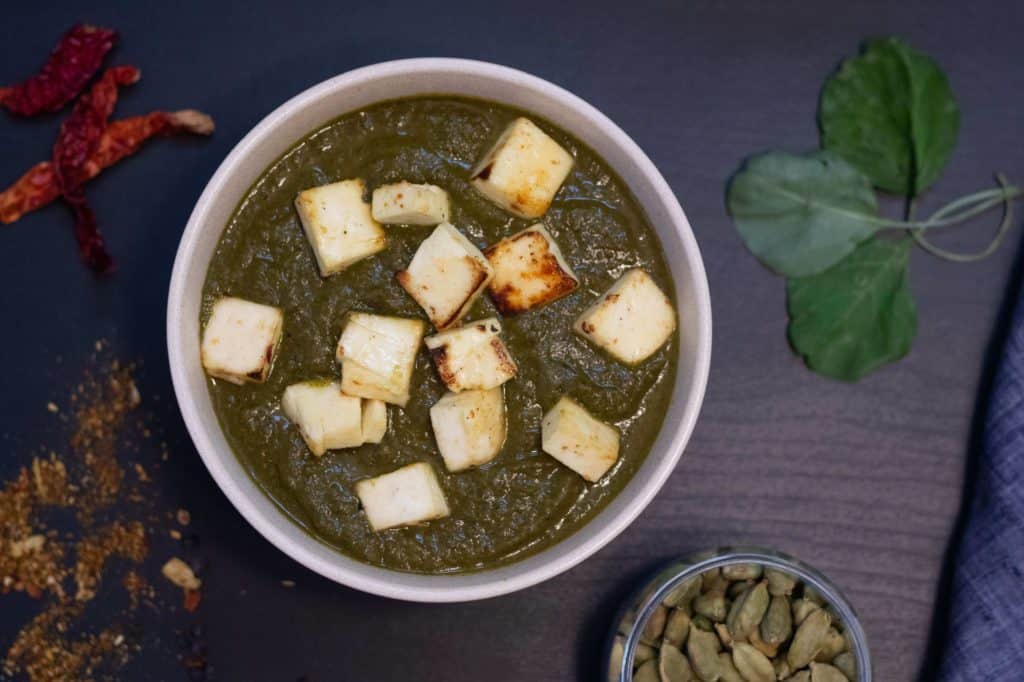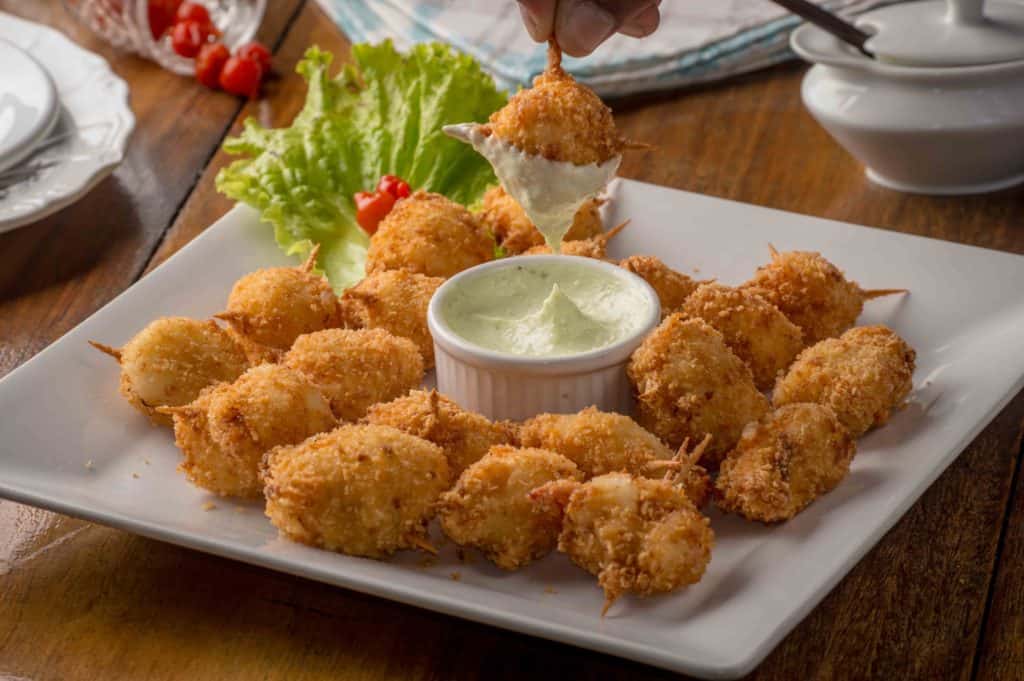Are cheese curds gluten free? YES if you make them yourself, and NO if fried with other foods that contain gluten or using breadcrumbs that are not GF!
If you have ever tasted the famous delicacy of Quebec, Canada, known as Poutine, you must be familiar with the cheese curds. While many people are fond of this snack, the most prominent question they seek is – are Cheese curds Gluten free?
Gluten free confidence score of cheese curds

We scored cheese curds with a 5/10 as the ingredients of cheese curds can vary between GF and not. Also the frying process might be using the same fryer as other foods which will cause the whole meal to be contaminated.
What are Cheese Curds?

You might have observed that sometimes the milk, when boiled, gets separated if it has gone bad. The solid white curd separates from the translucent whey, which then becomes unfit for drinking.
This natural process is used in cheese making.
During making cheese, acidic elements like Rennet, bacterial culture, etc., are added to activate the milk curdling process, after which the cheeses like Mozarella, Parmesan, Gouda, etc., are made.
While preparing cheese curds, the same process is used.
First, the milk is pasteurized and then curdled to separate the curds and the whey.
Once the milk components separate, it is cooked at an appropriate temperature, and then the curds are cut in tiny cubes and pressed.
Pressing the cubes helps release the whey and get solid cubes, called the cheese curds. Since it is a milk derivative, it has a mild taste and smell.
However, the taste is subjected to changes because the components added to curdle the milk may alter it.
Cheese curd has a similar texture to that of the regular cheese you have at home, but it is more rubbery and chewy.
This snack also has another name associated with it. It is sometimes called the “Squeaky cheese” because when you bite onto a piece, the squeaking sounds come, so it has this name.
This snack milk derivative naturally has white color, but some variants also display orange and yellow shades. You will find yellow cheese curds primarily in America.
What are the ingredients in Cheese curds?
| Milk | Curd |
| Cheese | Breadcrumbs |
Cheese curds are the by-product of cheese, so they primarily contain milk, cheese, and curd. These three food items are consumed by you daily because they form an integral part of your diet.
Since cheese curd has these three ingredients in it, let us understand them each briefly. Listed below are the three main components of cheese curd that give the desired texture and form to this food item.
1) Milk
Milk is the primary ingredient without which cheese curd cannot be made. Most commonly, cow and buffalo milk is used for making this food item. Milk contains proteins, lactose, and other essential nutrients, which is why it is said that having one cup of milk is like an entire meal.
This nutrient-rich white liquid is very beneficial for the human body, and its derivatives have the same benefits.
2) Curd
Curd is obtained when the milk is curdled by adding the Rennet and bacterial culture. These acidic agents coagulate the proteins present in the milk and form solid structures called curds, which then become cheese curds at the later stage.
This curd is mixed with the translucent whey. When pressure is applied, the curd releases the whey and becomes spongy and solid.
3) Cheese
When the curd is pressed and the whey is entirely separated, the solid part is processed further, giving out the final product. This cheese is what you find inside the burgers, on top of the pizza, melted in the saucy pasta, and so on.
Cheese is of different kinds and textures, and every type has its unique characteristic. It is a bit hard and not as chewy as the cheese curd.
Since the cheese curd is its by-product, cheese is considered one of the primary ingredients because the cheese curd has all the essential characteristics.
Besides, the cheese curd also includes different cultures, acidic solutions, and Rennet that help in the coagulation. If these ingredients are not added to fresh milk, obtaining cheese curd would be impossible.
Are Cheese Curds Gluten free in general?
Cheese curds can be gluten free if being fried in a dedicated frier and if the breadcrumbs used are gluten free.
PRO TIP – If you are eating curds at a restaurant or friends, you should ask if they were fried in a dedicated drier and if the breadcrumbs used are GF or not.
However, let’s focus some light on the much-dreaded protein Gluten and its effects before we proceed.
Cheese curd and Gluten
Cheese is made using milk obtained from the animals. Hence, milk is not a source of Gluten because animals don’t have Gluten in their body.
It means that:
Cheese curd does not have Gluten naturally and is safe for Gluten intolerant and people with Celiac to consume if cooked properly
Even though this milk derivative is Gluten-free, it doesn’t need to stay free from that protein. Since large manufacturing units deal with various products at the same time, cross-contamination is likely to happen.
This cross-contamination can leave traces of Gluten in the cheese curd and contaminate it.
You were not present at that place when the cheese curd was being made, and so you have no certainty of that pack to be Gluten-free.
Here comes the trick! Whenever you are purchasing the cheese curds, ensure that you check the label carefully. Some companies use Gluten-free ingredients to make Cheese curds but do not mention it on the label.
It indicates that the manufacturer does not guarantee the cross-contamination that might have taken place and hence doesn’t mention it on the label too.
If you are gluten-intolerant or suffering from Celiac, we recommend you to stay away from such products.
You can consume it at your own risk because the manufacturer doesn’t take responsibility for future repercussions. To be sure entirely, you should look for the packages of cheese curd that mention “Gluten-free” cheese curd.
When they mention it, they guarantee that the product is free from contamination and safe for consumption. Hence, if you come across cheese curds labeled “Gluten-Free,” only then buy it or else do not.
Cheese curd usages
Cheese curd is gaining more popularity and attaining new forms:
- Fresh Cheese Curd
The fresh cheese curd is more soft and squeezy, so it is more often used as an appetizer and finger food. You can dice it into manageable pieces and then season it with some spices or flavors to enhance the taste.
The fresh appetizer can also be eaten in its original form without adding anything. When the flavorings are concerned, you can spice them up with pepper, chilies, jalapenos, herbs, garlic. Etc.
- Paneer

Paneer is a form of cheese curd that is found exclusively in the Indian Subcontinent. This milk derivative is slightly different from the cheese curd because its production process is different.
To make Paneer, boiling milk is used in which acidic elements like lemon juice, Vinegar, etc., are added to curdle the milk.
Once the curdling is done, the curd is then strained and pressed to get the cottage cheese or Paneer as the Indians call it. Paneer is a vegetarian alternative to meat and is used in curries, appetizers, snacks, etc.
- Fried Cheese curds

When tiny pieces of the cheese curd are covered with a thin batter and deep-fried, they are known as Fried cheese curds. This variant is more commonly served at bars and fairs as snacks, which are loved by all.
The popular dips that go with are ranch sauce, marinara sauce, and ketchup. Fried cheese curds are famous in Wisconsin in the USA.
- Poutine

Poutine is the famous dish of Quebec, Canada, that can be grabbed on the go in the Fast Food, just like pizza or hamburger.
The Fresh cheese curd is used as a topping on the French fries made using a potato.
After the small dices are added, brown gravy is poured to finish it off. If you haven’t eaten Poutine yet, you are missing many things.
Is this a good reason to visit Canada.? We do think so!
Homemade Cheese Curd recipe
If you want to consume Gluten-free cheese curd but are uncertain about the product available in the market, leave behind your worries and get started with the necessary ingredients that you have.
The steps listed below will enable you to prepare your homemade version of the cheese curd free from the disadvantageous protein. So, without wasting further time, let’s get started with the process.
Ingredients:
- Pasteurized milk – 2 Gallons
- Cheese salt – To taste
- Calcium chloride – ½ tsp
- Liquid Rennet – ½ tsp
- C201 Thermophilic Culture – 1 Packet
- Water – 1 Gallon
Equipment:
- Curd Knife to cut the curd into small pieces
- Cheesecloth to strain the curd and separate the whey
- Stainless Steel Pot to warm the milk and add the culture and Rennet.
- Spoon or Ladle to stir the curd.
- A jug for storing water.
- Thermometer to add the coagulating Rennet and Culture at the precise temperature of the milk.
Instructions:
- Turn on your burner and put the steel pot on it with 2 gallons of milk inside it. Warm the milk to a temperature of 96 Fahrenheit.
- Once the temperature reaches the prescribed units, start adding Calcium Chloride and Culture slowly. After adding it, leave the pot of milk at the same temperature for the next 30 minutes so that the culture activates and starts ripening the milk.
- Rennet has to be added after the ripening starts so that the protein in the milk coagulates and separates from the whey. You will see the curd formation, which indicates that the curdling of milk has been initiated.
- When the curdling stops, use your knife and run it through the curd’s large piece to cut into manageable chunks. The ideal size of a cube of cheese curd is 3/4inch. Once cut, wait for 3 minutes to let the curd settle and take the cubical shape.
- After the 3 minutes are over, take the spoon and stir the curd so that the pieces get separated from the large portion. While doing it, ensure that the temperature remains the same throughout.
- Now, it is time to cook the curd for the next 30 minutes at an ideal temperature of 116 degrees Fahrenheit. Cooking the curd releases the whey inside it, and thus the pieces shrink further.
- When the curd has been dried according to your preference, use the cheesecloth and strain the curd. Hang the cloth at a height so that the maximum amount of whey drains off.
- After straining the curd, press it to release more whey and make it dry so that it can be used as you want it.
- To finish the cheese curd, sprinkle some salt on it and toss lightly so that the seasoning is spread evenly on every piece.
Wrapping up
Cheese curd is made using cow or buffalo milk, which is entirely gluten-free.
However, some manufacturing units add a small amount of wheat flour to enhance the texture, or a particular batch of cheese curd is subjected to cross-contamination.
To ensure that you are consuming Gluten-free cheese curd, check the label before purchasing it from the market.
If you find any discrepancy, then abandon the package then and there and start preparing your homemade cheese curd to enjoy with some ketchup.
If you are all into cheese and love to mix it with everything but avoid gluten, check this recent article on Frigo String Cheese.